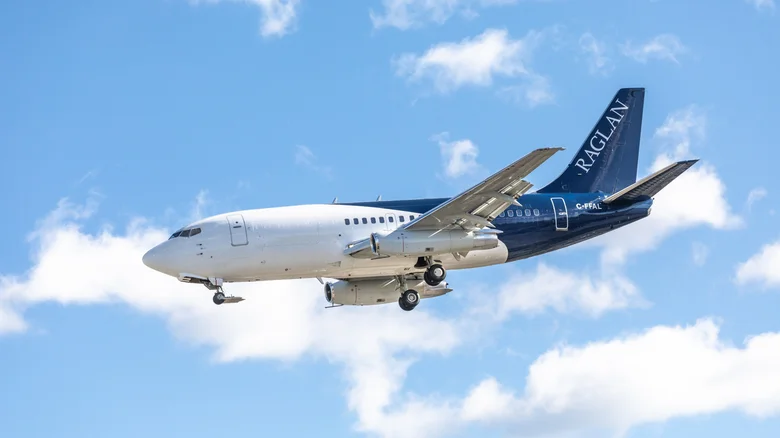In the wake of recent aviation disasters, flight safety has become a hot-button issue in America’s infrastructure debate. From federal scrutiny of the Federal Aviation Administration (FAA) to public figures like Hillary Clinton and Transportation Secretary Sean Duffy weighing in on social media, the conversation has intensified. Amidst this, one often-overlooked aspect of flight safety is the role of gravel kits—specialized modifications that allow aircraft to land on unpaved runways.
Originally designed in the 1960s, gravel kits were a game-changer for aviation, enabling planes to access remote areas with minimal infrastructure. But are they still relevant today? In this article, we’ll explore the history, functionality, and current use of gravel kits, and examine their place in modern aviation.
The Rise of Gravel Kits: A Solution for Remote Air Travel
Why Gravel Runways?
In remote regions, particularly in areas with extreme climates like the Arctic or Alaska, constructing paved runways can be prohibitively expensive or logistically impossible. Gravel runways offer a cost-effective alternative, requiring less upfront investment and easier maintenance. However, these unpaved surfaces pose unique challenges for aircraft, including:
- Debris Damage: Rocks, dust, and gravel can damage engines, landing gear, and other critical components.
- Reduced Traction: Gravel surfaces can make takeoffs and landings more challenging.
- Increased Wear and Tear: The abrasive nature of gravel accelerates the deterioration of aircraft parts.
The Birth of Gravel Kits
To address these challenges, manufacturers like Boeing developed gravel kits in the 1960s. These kits were designed to protect aircraft during operations on unpaved surfaces, making it possible for commercial jets like the Boeing 737 to safely land in remote locations.
What’s Inside a Gravel Kit?
Key Components
Gravel kits are essentially a set of modifications that protect an aircraft during operations on unpaved runways. Here’s what they typically include:
- Deflectors: Installed on the landing gear and nose gear to prevent rocks and debris from damaging the aircraft’s underside and flaps.
- Metal Shields: Protect brake cables and hydraulics from debris.
- Vortex Dissipators: Disrupt air pathways to prevent gravel and rocks from being sucked into the engines.
- Reinforced Flaps: Strengthened to withstand the additional stress of gravel landings.
- Teflon Paint: Applied to the underside of the wings and fuselage to reduce abrasion.
- Additional Lighting: Improves visibility during landings on poorly lit runways.
Operational Adjustments
Using a gravel kit also requires changes to flight procedures, including:
- Lower Speeds: Reduced takeoff, landing, and gear operation speeds to minimize the risk of damage.
- Limited Reverse Thrust: Prevents debris from being blown into the engines.
- Tire Pressure Adjustments: Lower tire pressure ensures a smoother landing on uneven surfaces.
Are Gravel Kits Still in Use Today?

The Decline in Commercial Use
As air travel has evolved, the demand for gravel kits has diminished. Modern commercial aircraft, like newer models of the Boeing 737, are no longer equipped with gravel kits due to:
- Reduced Need: Most commercial flights operate between major airports with paved runways.
- High Costs: Manufacturing and maintaining gravel kits became economically unviable for large-scale commercial use.
Niche Applications
Despite their decline in commercial aviation, gravel kits remain vital for certain operations:
- Remote Regions: Airlines like Nolinor, Air Inuit, and Canadian North continue to use gravel-kit-equipped Boeing 737-200s to service remote areas in Canada and Alaska.
- Cargo and Passenger Flights: These aircraft can transport up to 119 passengers or 30,000 lbs of cargo, making them indispensable for isolated communities.
- Smaller Aircraft: Companies like Textron Aviation have introduced gravel kits for smaller planes, such as the Cessna SkyCourier, ensuring they can operate in challenging environments.
The Future of Gravel Kits

A Niche but Essential Tool
While gravel kits may no longer be mainstream, they remain a critical tool for aviation in remote and underserved regions. Their ability to enable safe operations on unpaved runways ensures that air travel remains accessible to communities that would otherwise be cut off from the world.
Innovations in Aviation Safety
As aviation technology advances, the principles behind gravel kits—protecting aircraft from environmental hazards—continue to inspire new innovations. For example, modern materials and engineering techniques are being used to develop more durable and efficient solutions for operating in challenging conditions.
Expert Insights: The Role of Gravel Kits in Modern Aviation

We spoke with Captain Sarah Mitchell, a veteran pilot with over 20 years of experience flying in remote regions, for her perspective on gravel kits.
“Gravel kits are a lifeline for communities in remote areas. They allow us to deliver essential supplies, transport passengers, and provide medical evacuations in places where paved runways simply aren’t an option. While they may not be as common as they once were, their importance cannot be overstated.”
A Legacy of Innovation
Gravel kits represent a fascinating chapter in aviation history, showcasing how innovation can overcome the challenges of operating in remote and harsh environments. While their use has declined in commercial aviation, they remain a vital tool for connecting isolated communities and supporting critical operations.
As the aviation industry continues to evolve, the lessons learned from gravel kits will undoubtedly inspire new advancements in flight safety and accessibility. Whether you’re a frequent flyer or an aviation enthusiast, the story of gravel kits is a reminder of the ingenuity and resilience that define modern aviation.
Key Takeaways
- Gravel kits were developed in the 1960s to enable aircraft to safely land on unpaved runways.
- They include components like deflectors, vortex dissipators, and reinforced flaps to protect against debris damage.
- While their use has declined in commercial aviation, they remain essential for operations in remote regions like Alaska and the Arctic.
- Airlines like Nolinor and Air Inuit continue to use gravel-kit-equipped aircraft for passenger and cargo flights.
- Innovations inspired by gravel kits continue to shape the future of aviation safety.
By understanding the role of gravel kits, we gain a deeper appreciation for the challenges and triumphs of aviation in some of the world’s most demanding environments.








